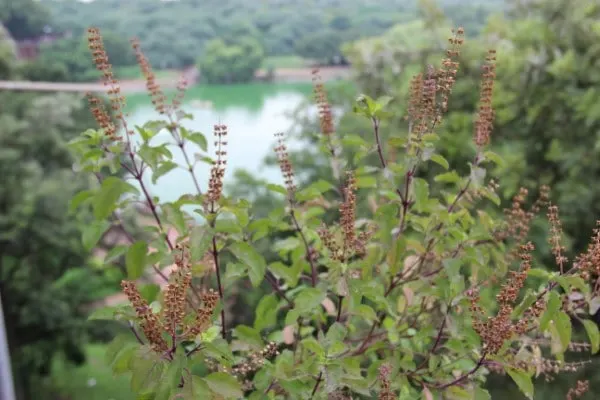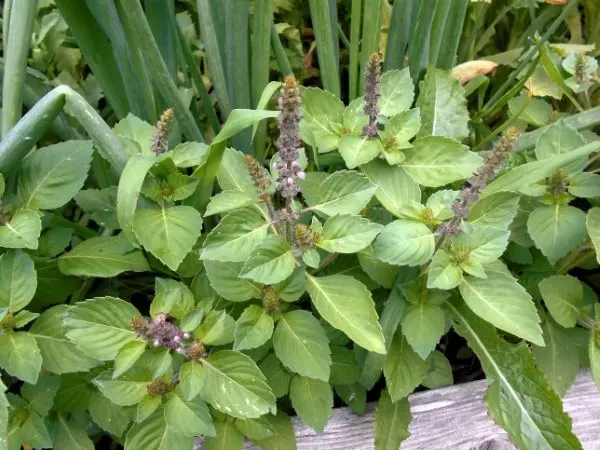Tulsi is difficult to thrive in winter because it is an annual species. The tulsi plant dies in winter because it cannot tolerate cold weather conditions.
The leaves of the tulsi plant turn brown and dry up when the temperature drops below 10 degrees Celsius. This article will discuss how to take care of Tulsi in winter.
The Tulsi plant is an aromatic herb that belongs to the mint family. It is also known as Holy Basil and is worshipped in India for its religious significance. The Tulsi plant leaves are used to make tea, which is believed to have a host of health benefits.
The plant is also grown for its ornamental value. Therefore, learning how to take care of Tulsi plant in winter is important for keeping this plant alive and healthy.
Tulsi is a tropical plant and cannot tolerate cold weather. The minimum temperature required for the growth of tulsi is 10 degrees Celsius. Tulsi plants are susceptible to pests and diseases, killing the plant. Therefore, it is important to take care of the Tulsi plant in winter so that it remains alive.

A Guide on How To Take Care of Tulsi In Winter
Many people think that the Tulsi plant is very delicate and dies easily in winter. The Tulsi plant is quite hardy in zones 10 and 11. It can survive in winter if proper care is taken.
Let’s see how to take care of tulsi in winter. It would be best to do a few things to take care of your Tulsi plant in winter.
Place the plant at a Sunny Spot
The first thing that you need to do is make sure that your Tulsi plant is in a sunny spot. Tulsi plants need plenty of sunlight to grow and thrive. If you cannot provide your Tulsi plant with enough sunlight, you should consider moving it to a sunnier spot.
If it is freezing outside, you can place your Tulsi plant in a sunny spot in your house. Alternatively, you can also place it near a window where it will get plenty of sunlight.
Tulsi plants demand at least six to eight hours of sunshine throughout the day, with a temperature range of 21°C. If you don’t have enough sunshine to grow plants inside, these full-spectrum LED lights are available to save the day.
These lights may be utilized for other plants and offer a variety of features, including timers and light sensitivity adjustments. You may cover the cloth on basil/tulsi plants to raise the temperature.
Water the Plant Regularly
The next thing you need to do is make sure that your Tulsi plant is properly watered. Tulsi plants need plenty of water to stay healthy. You should water the plant regularly so that the soil remains moist.
However, it would be best to be careful not to overwater the plant as this can lead to problems such as root rot. Tulsi plants need plenty of water to survive in winter. Ensure to water your Tulsi plant regularly, especially if the weather is dry.
It’s also possible that you used too much water or cold water, and your mildew might have gotten out of control. Try adding lukewarm instead of cold to the plant if you’re using tap water.
You may also try adding milk to lukewarm water to retain moisture for longer. This helps ensure that the plant is always green.
Fertilize the Plant
Tulsi plants need to be fertilized regularly to stay healthy and produce plenty of leaves. You can use a balanced organic fertilizer or a water-soluble fertilizer to fertilize your Tulsi plant. Fertilizing the plant will help it to grow healthy and strong in winter.

Protect the Plant from Cold Weather
You also need to make sure that your Tulsi plant is not too cold. Tulsi plants do not tolerate cold weather conditions and can die if the temperature drops below 10 degrees Celsius.
If it is cold outside, you should consider bringing your Tulsi plant indoors. You can also protect the plant from the cold weather by covering it with a cloth or a blanket.
Tulsi plants do not thrive in cold weather. Make sure to keep your Tulsi plant in a warm spot, away from the windows. You can also place a heater near the plant so that it stays warm.
Pruning the Plant
Tulsi plants need to be pruned regularly to promote new growth. Pruning the plant will help it stay healthy and produce plenty of leaves.
You can prune the plant by cutting off the dead or diseased branches. It would be best to cut off the stems that are growing in the wrong direction. Pruning the plant will help it stay healthy and look good in winter.
Remove dead leaves hoe the plant’s roots every month using a sharp knife. This helps the plant distribute nutrients from the roots to the top of the plant. Remove lifeless leaves that have fallen throughout the winter season.
Soil
This plant doesn’t need soil, except in extremely saline, alkaline, or waterlogged conditions. It thrives in sandy loam soil with substantial organic content and is deemed excellent.
It may be cultivated in both tropical and subtropical regions. Tulsi plants thrive in long days and high temperatures, which are excellent circumstances for the plant’s growth.
The quality of soil also affects the growth and development of plants. Avoid soggy soil for as long as possible because if it stays wet for an extended period, mould and root rot will develop.
Transplanting
The tulsi plant can also be transplanted to save it from dying in winter. When you transplant the plant, make sure to dig up the entire root system. You should also prune the plant before transplanting it. Transplanting the plant will help it to survive in winter.
Pests and Diseases
Tulsi plants are susceptible to pests and diseases, killing the plant. Therefore, it is important to take care of your Tulsi plant in winter so that it remains alive.
You should check the plant regularly for pests and diseases. If you see any pests or diseases, you should take steps to get rid of them immediately.
Final Remarks
Taking care of your Tulsi plant in winter is not as difficult as it may seem. If you are concerned about how to care of the Tulsi plant in winter, there are a few things that you need to do.
Tulsi or basil plants love heat, lots of sunshine, well-draining soil, bright light, a little humidity, proper air circulation, and reduced watering. Make sure to follow these tips so that your plant stays healthy and produces plenty of leaves.
Now that you know how to take care of the Tulsi plant, make sure to take care of your plant, and it will take care of you. Tulsi is the “Queen of Herbs” and has been used in Ayurvedic medicine for centuries. Your Tulsi plant will stay healthy and alive in winter if you follow these tips.
